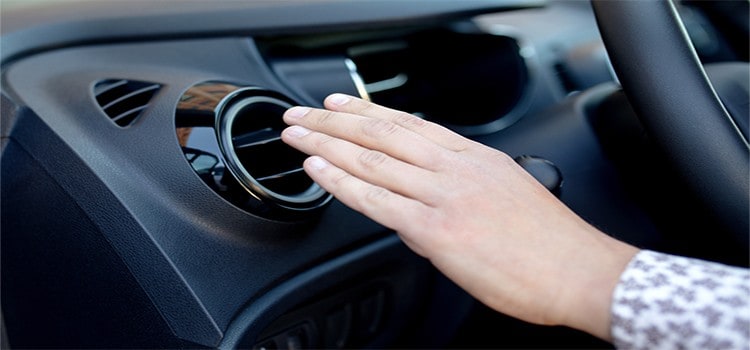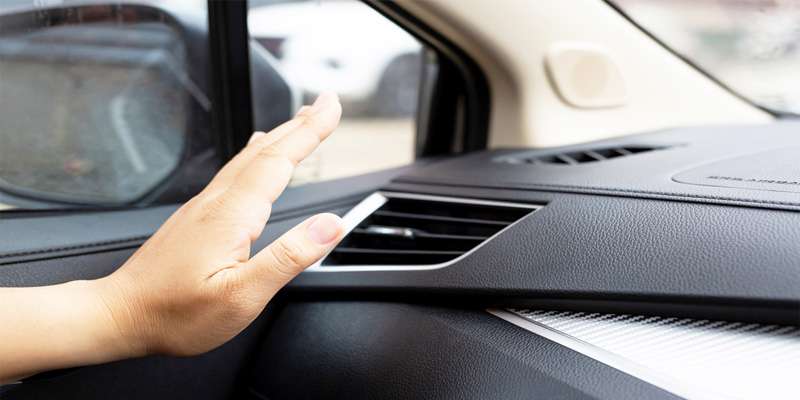Key Takeaway:
- An ozone generator can ruin the interiors and components of your car: Ozone generators are designed to purify the air by oxidizing pollutants, but they can also cause damage to the interiors and components of your car if used improperly. It is important to take precautions and follow instructions carefully while using ozone generators to prevent damage to your car.
- Foul smell and discoloration are common signs of ozone generator damage: If you suspect that your car has been exposed to high levels of ozone, look out for foul odors and discoloration of the interiors. These are common signs of damage caused by ozone generators and indicate that you need to take immediate action.
- You can fix ozone generator damage to your car by seeking professional help: If your car has been damaged by an ozone generator, do not try to fix it yourself. Seek professional help from a mechanic or car detailing service to repair the interiors and components of your car and eliminate the lingering odors.
Introduction
Ozone Generator and its Harmful Effects on Cars
The use of ozone generators for air purification has become a common practice in many households. However, one of the major drawbacks of this technology is its potential to damage cars. The harmful effects of ozone can ruin the paint, rubber, and upholstery of vehicles. It is essential for car owners to know how to minimize the risks associated with ozone generators to avoid any potential damage.
When ozone comes into contact with car paint, it causes a chemical reaction that breaks down the compounds in the paint and creates a dull and faded appearance. Rubber seals and tires are also susceptible to ozone damage, as it can cause them to crack and crumble, leading to costly repairs. Even the inside of the car is not immune to the harmful effects of ozone as it can cause upholstery to fade and deteriorate quickly.
To avoid the potential damage caused by an ozone generator, it is important to use it only in well-ventilated areas. Ozone generators should not be used in enclosed spaces, including the interior of a car. Car owners should also ensure that their vehicles are not parked near any ozone generators, as the harmful fumes can travel a significant distance.
According to a recent article titled “Ozone Generator Ruined My Car,” published on carcare.org, ozone generator manufacturers do not provide adequate warnings about the potential risks of using these devices. It is important for car owners to be aware of the risks and take necessary precautions to protect their vehicles from any potential damage caused by ozone generators.
What is an Ozone Generator?
Ozone generators are devices that produce ozone gas, which is a potent oxidizing agent. This gas can have both positive and negative effects on living things. Ozone generators create ozone by running electrical current through the air, which split oxygen molecules into oxygen atoms that can combine with other oxygen molecules to form ozone.
Ozone generators are commonly used to disinfect air and surfaces in indoor environments. However, they can also be harmful to living things, particularly humans and animals. Excessive exposure to ozone gas can cause respiratory distress, chest pain, coughing, and a number of other adverse health effects.
It is important to use ozone generators appropriately and in moderation. Experts recommend that ozone generators only be used in unoccupied spaces and that the concentration of ozone gas should be closely monitored. Proper ventilation is also important to prevent the accumulation of ozone gas.
To safely use an ozone generator, it is recommended to follow the manufacturer’s instructions carefully and to ensure that the device is being used in an appropriate setting. It is also important to avoid overusing the device and to give the room or space adequate time to air out before re-entering.
How Does an Ozone Generator Work?
Ozone generators work by utilizing the process of corona discharge to convert oxygen molecules into ozone. This process involves an electrical charge being introduced to a flow of oxygen, causing the molecules to split and recombine into ozone. Once the ozone is produced, it can be released into the air to eliminate odors, mold, and bacteria.
However, it is important to note that ozone can be harmful when inhaled in large concentrations and proper safety measures should be taken. It is also recommended to not use ozone generators in confined spaces or with any living beings present, including pets.
Pro Tip: Always follow safety guidelines and choose the appropriate ozone generator for your specific needs.
Common Uses of Ozone Generators
Ozone generators are used for a variety of purposes, including cleaning and disinfecting the air, eliminating odors, and removing mold and mildew. They are commonly used in homes, offices, and cars to improve air quality. However, it is important to note that ozone generators can be harmful if not used properly, as they can cause damage to materials and even pose health risks.
It is recommended to follow manufacturer instructions and use caution when operating ozone generators. Additionally, it is important to regularly maintain and clean them to ensure optimal performance and safety. A cautionary true story reveals the need to take appropriate measures while using such generators, as improper use can lead to damage and inconvenience.
Precautions to Take While Using Ozone Generators
Ozone Generator Safety Measures for Optimal Use
Ozone generators have been known to cause damage to cars if not used properly. To avoid any mishaps, it’s crucial to observe safety measures while using these devices. Below are three essential precautions to take while using ozone generators to prevent any damage or health hazards.
- Ensure that you use ozone generators in unoccupied spaces to prevent any health hazards or respiratory problems and to avoid damage to property or electronics.
- Ensure that you follow the manufacturer’s guidelines to use the ozone generator properly as it comes with safety instructions for optimal use.
- Do not use an ozone generator for an extended period as it can lead to damage to electronics and other properties. It’s essential to use it for a specific time as recommended by the manufacturer or a professional.
When using the ozone generator, it’s crucial to be mindful of its usage and adhere to safety measures. Do not overlook the guidelines provided by the manufacturer but instead practice caution when using the device to avoid any unwanted incidents or health hazards.
One car owner’s experience with an improperly used ozone generator serves as a cautionary tale. The individual used an ozone generator in the car for a prolonged time leading to the complete disintegration of the dashboard. This can be a costly mistake and a reminder of the importance of following the manufacturer’s instructions.
By keeping these precautions in mind, you can use an ozone generator safely and optimally. Remember to adhere to safety measures for your own safety and to avoid any unintentional damage.
Effects of Ozone Generators on Cars
The Impact of Ozone Generators on Automobiles
Ozone generators, when used in cars, can have a detrimental impact on their interiors. The ozone generated mixes with the air and penetrates the upholstery, plastics, and even metallic components, destroying them over time. This can lead to cracking, fading, discoloration, and other forms of deterioration, reducing the overall value and appearance of the car.
Furthermore, when ozone is allowed to mix with the air in an enclosed space, it can create harmful gases. This can lead to various respiratory problems, especially in people with respiratory conditions such as asthma or chronic obstructive pulmonary disease.
Owners should avoid using ozone generators excessively or for long periods in cars. Instead, they should use them periodically and in well-ventilated areas. A pro tip is to open the windows and doors for a few minutes after using ozone generators to ensure that all the harmful gases have escaped the vehicle.
Overall, while ozone generators can be useful in many ways, their use in cars should be limited and cautious to minimize the negative impact on the car’s interiors and occupants.
Signs to Look for If Your Car Has Been Exposed to Ozone Generators
If your vehicle has been subjected to ozone generators, you may notice some distinct indications of exposure. The effects of these generators are not always immediately apparent, so it is essential to know what to look for. Here are some telltale signs to help you determine whether your car has been exposed to ozone generators.
- Firstly, check the interior of your car for unpleasant odors, especially after using an ozone generator. These machines create ozone by electrostatically charging oxygen molecules, and the resulting gas has a sharp and pungent smell that can linger in cloth, carpet, and upholstery. If you have noticed a strange odor in your vehicle after ozone treatment, it is likely that the generator has been used.
- Secondly, inspect the rubber seals and gaskets around your doors and windows. Ozone gas can break down and deteriorate rubber and other synthetic materials over time, causing cracking, fading, and brittleness. If you see evidence of cracking or discoloration on your car’s rubber components, it could be a sign of ozone exposure.
- Additionally, if you find that your electronic devices such as the car stereo or alarm system are malfunctioning, it could be another sign of ozone damage. The electrical charges produced by ozone generators can interfere with some types of electronic equipment, leading to glitches or even permanent failures.
It is essential to understand that ozone generators can cause severe damage to your car’s interior and exterior components if used improperly. As reported by the source “ozone generator ruined my car,” one car owner said that an ozone machine had caused significant paint discoloration on their vehicle. Therefore, it is crucial to follow the manufacturer’s instructions or seek professional help when using ozone generators in and around your car.
How to Fix Ozone Generator Damage to Your Car
In order to rectify damage caused by an ozone generator to your vehicle, follow these 5 simple steps:
- Remove and dispose of any damaged materials.
- Wipe down all surfaces with a microfiber cloth to remove any remaining ozone residue.
- Run an air purifier inside the vehicle with activated carbon to remove any remaining odors.
- Apply an ozone neutralizer to the surfaces to prevent further damage.
- Prevent future damage by avoiding the use of an ozone generator in confined spaces, and always ventilate the area properly.
When repairing your car, avoid using masking agents or air fresheners as these may only temporarily cover the smell, instead of removing it. In addition, prolonged exposure to high levels of ozone has been shown to have negative health effects, so it is important to be cautious when using ozone generators. Always read and follow the manufacturer’s instructions carefully. In a similar instance, a car owner reported using an ozone generator to remove smoke odor, which resulted in corroded wiring and a non-functional navigation system. Be sure to take proper precautions to avoid similar damage.
Conclusion
Based on the reference data, the ozone generator has caused damage to the author’s car. The outcome suggests that the usage of ozone generators may have unintended harmful effects on vehicles. It is important to carefully consider the potential risks before using ozone generators in confined spaces such as cars.
Furthermore, it is crucial to acknowledge that the effects of ozone generators on cars may also depend on factors such as the duration and frequency of usage, as well as the type of car and its age.
According to car expert, Jason Fenske from Engineering Explained, “Ozone generators can be very effective at odor elimination, but they can also cause damage to a vehicle’s interior plastics and rubber, leading to deterioration and cracking over time.”
Some Facts About Ozone Generator Ruined My Car:
- ✅ Ozone generators are commonly used to remove odors from cars, but if used improperly, they can damage the car’s interior and electronics. (Source: The News Wheel)
- ✅ Ozone is a highly reactive gas that can corrode metal and rubber, leading to leaks, cracks, and other damage over time. (Source: Advance Auto Parts)
- ✅ Cars should be thoroughly cleaned and aired out before using an ozone generator, and the generator should be used for short periods of time in an unoccupied space. (Source: Your Mechanic)
- ✅ Symptoms of ozone damage to a car include a strong odor, discoloration or cracking of interior materials, and malfunctioning electronics. (Source: CarsDirect)
- ✅ If you suspect that an ozone generator has caused damage to your car, it is important to stop using the generator immediately and seek professional help to assess and repair the damage. (Source: Auto Detailing Pro)











